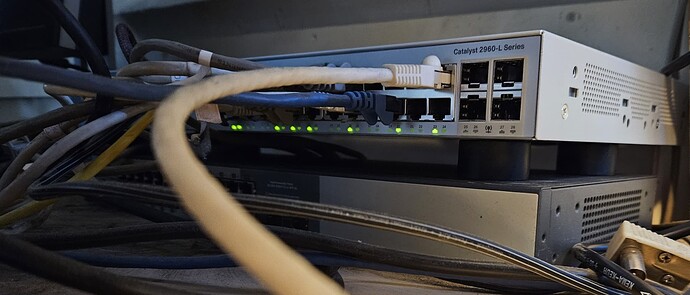Sure, let’s have polite discussion about this 
I translated the article you linked to (sent you a copy to verify that I’ve not missed anything), there are a number of issues mentioned in the article, but let’s start with the most critical one;
IMHO, there’s no argument that some Ethernet Switches will be noisier than others for whatever reasons be it Power Supply or poor Engineering. So, that’s a given. Resulting in a question of whether such noise affects the DAC and how (knowing full well that it doesn’t affect PCs to the extent that no applications are affected… more on this later).
The jitter problem they allude to is however inconsequential as the physical Ethernet stream is completely terminated on an Ethernet PHY chip (immediately after the Ethernet Pulse transformer at the port); with a Qualcomm Atheros AR8030 on dCS platforms. While data is assembled from IP Packets reconstructed by a separate CPU and networking stack; the TI Sitara ARM CPU/Linux on the dCS. Both the PHY chip and the ARM CPU/Linux are closely-coupled and isolated on the S800 board.
So, the issue is just one of noise, and the key question then becomes;
(a) Can such noise affect the sound of the DAC? (Enough to be heard)
(b) Can such noise be easily mitigated (without having to spend $2,000 on an Ethernet Switch)?
The answer to (b) is simple. There are any number of ways to eliminate noise from a noisy Ethernet Switch; fibre based isolation being one. The problem domain then reduces to just the Media Converter at the far-end where one can focus on cleaning things up. Most Media converters are built on a single chip coupled with a PSU, it’s trivial to produce noise-free Ethernet to attach to the DAC. The pictures in the linked article seem to suggest they measured both the Ethernet Switch directly and with a Fibre media converter, but they don’t show any of the measurement results. Maybe I’m missing it somewhere.
As for (a), let me put this thought experiment in your mind;
Take the cheapest/crappiest PC you can find. Attach it to the noisiest nastiest Ethernet Switch you can find. If you were to download an Excel spreadsheet, would you agree there is zero chance that the spreadsheet will have any error?
So, somehow, Ethernet noise has zero effect on the cheapest nastiest PC and application, but it affects the dCS platform & application (D-to-A)? Do you actually believe that the dCS Compute board is worse than the cheapest PC? 
Back to the article you linked to; there’s no explanation or demonstration of what they measured on the Metrum Streamer/DAC with the Wavecrest - unless I’m somehow missing it - they don’t show or explain the measurements, but they jump to this critical conclusion;
Does a switch affect the clock in a streamer or dac?
Yes: 100%. We have now proven that, we hope.
…
However: in terms of phase noise, we find 10 dBc/Hz quite significant. In addition, the audible influence is also quite significant between a router supplied free of charge compared to a decent Netgear or Dlink.
What have they proven exactly? They didn’t show any measurements.
Also, am I mis-reading this? They’re suggesting that the noise or jitter from the physical Ethernet stream causes phase-noise on the DAC’s CLOCK?? 
Within dCS DACs, the Ethernet stage is so far removed, in terms of stages, not physical distance, from the DAC’s Clock, that frankly, it’d be ludicrous to suggest that Ethernet noise or Ethernet physical layer inter-symbol jitter can affect it. Plus, with dCS’ hyper-focus on Clocking, do you actually believe they’d engineer the DACs to allow Ethernet to affects the D-to-A Clock?? Come on!!
My question/suggestion, did you truly honestly blind test yourself when you heard the difference? 
